
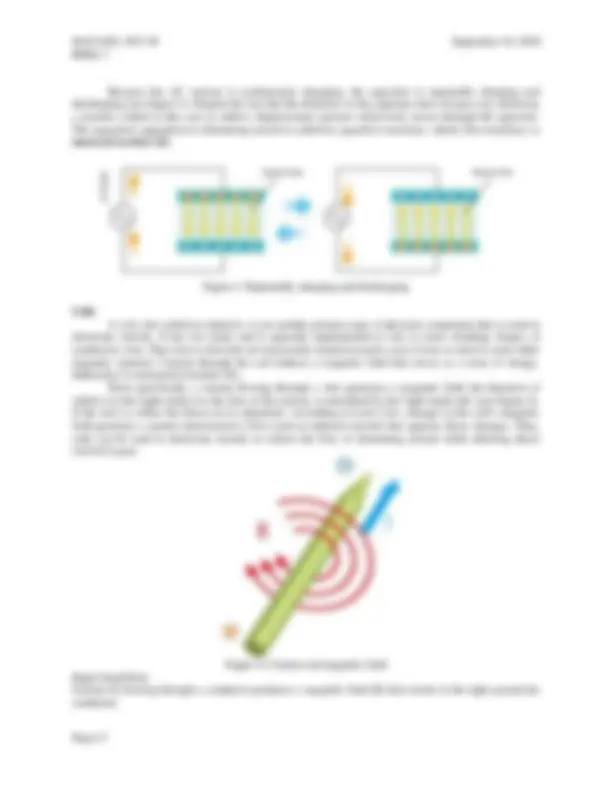
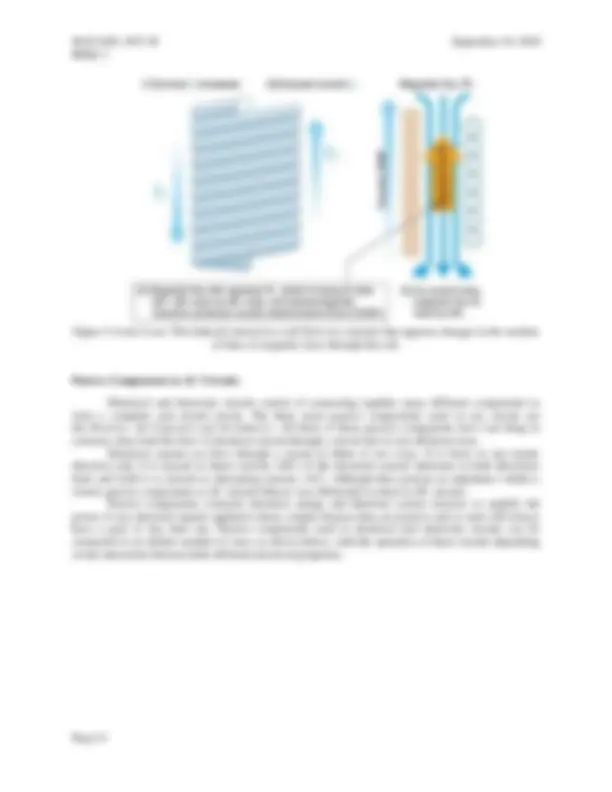
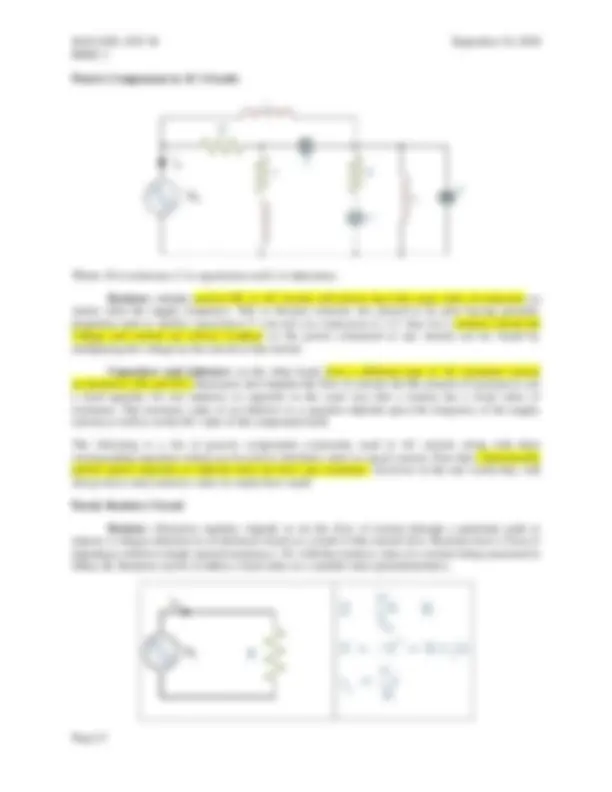
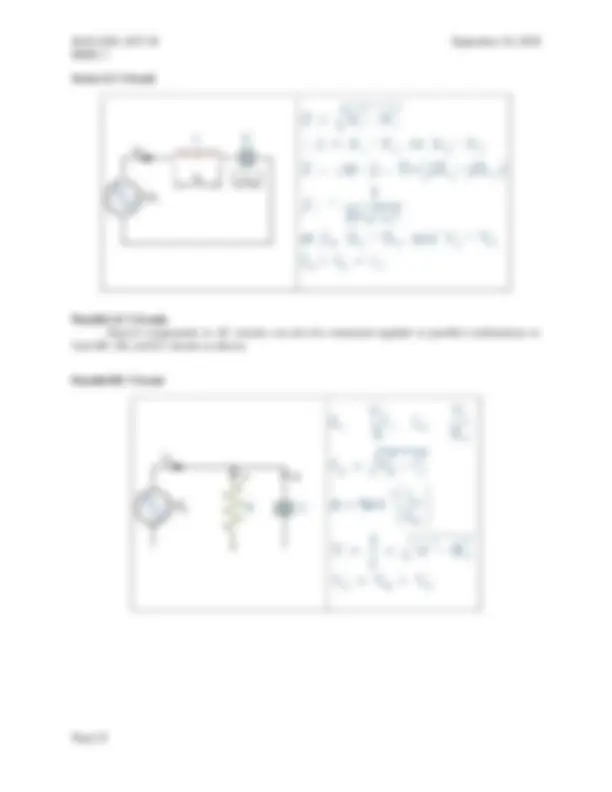
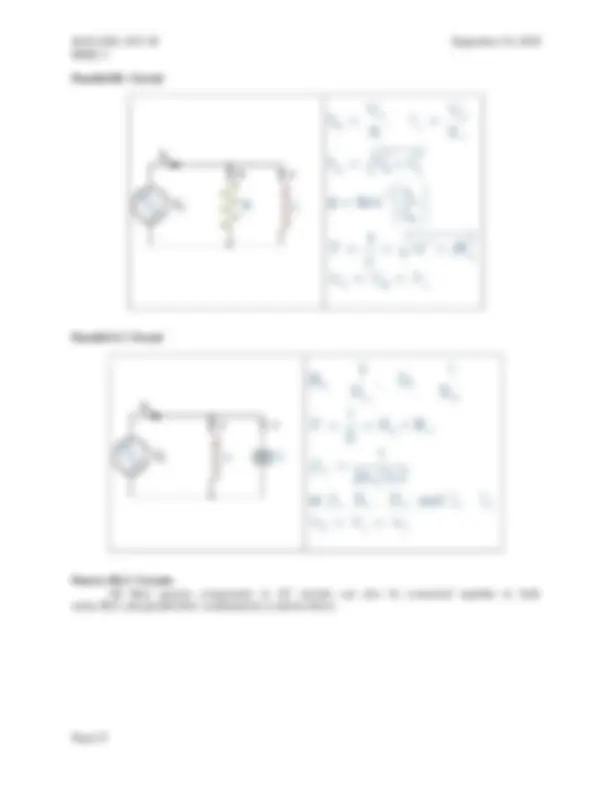
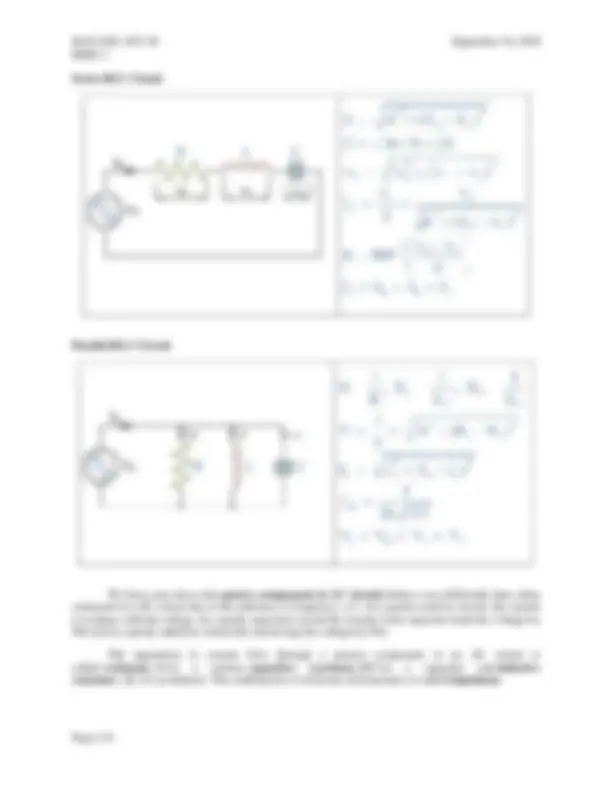


Study with the several resources on Docsity

Earn points by helping other students or get them with a premium plan


Prepare for your exams
Study with the several resources on Docsity

Earn points to download
Earn points by helping other students or get them with a premium plan
Community
Ask the community for help and clear up your study doubts
Discover the best universities in your country according to Docsity users
Free resources
Download our free guides on studying techniques, anxiety management strategies, and thesis advice from Docsity tutors
This is a copy of my assignment about transient response in DC circuits.
Typology: Assignments
1 / 11

This page cannot be seen from the preview
Don't miss anything!







Transients in Power System Sinusoidal wave deviates from its normal form whenever there is a sudden change in the system such as by faults, addition or removal of heavy loads, power outages. This short-duration abrupt deviation from the normal sine wave is called transient. They are an instantaneous change in the state leading to a burst of energy.
Types of Transients There're two types of transients: electromagnetic and electromechanical transients. Although they both are interrelated and have a slight difference between them. Electromagnetic transients deal with the changes in voltages and currents are usually caused by closing or opening of circuit breakers, power electronic equipment’s, equipment failure or faults, lightning strokes etc. Electromechanical transients are caused by mismatch between power production and consumption causing the generator to either speed up or slow down compared to its normal rotation speed. The reason for that is usually a disturbance in a system such as the outage of a nearby transmission line. Unlike electromagnetic transients, which are very fast, electromechanical transients take longer time because of inertia of huge generator shafts.
Transient are the surges or spikes in electric currents and voltages which are transmitted through power or data lines.
Types of Transients There are single-energy transients and double-energy transients. Single-energy transients are those in which only one form of energy, either electromagnetic or electrostatic is involved as in R-L and R-C circuits. However, double-energy transients are those in which both electromagnetic or electrostatic is involved as in R-L-C circuits Transient disturbances may be further classified as follows : (a) Initiation Transients : These are produced when a circuit, which is originally dead, is energised. (b) Subsidence Transients : These are produced when an energised circuit is rapidly de-energised and reaches an eventual steady-stage of zero current or voltage, as in the case of short-circuiting an R-L or R-C circuit suddenly. (c) Transition Transients : These are due to sudden but energetic changes from one steady state to another. (d) Complex Transients : These are produced in a circuit which is simultaneously subjected to two transients due to two independent disturbances or when the disturbing force producing the transients is itself variable. (e) Relaxation Transients : In these transients, the transition occurs cyclically towards states, which when reached, become unstable themselves. A distinction may also be made between free and forced transients which are produced due to the applied voltage being itself transient. A distinction may also be made between free and forced transients which are produced due to the applied voltage being itself transient.
Three (3) Electrical Elements and their Behaviours in DC and AC Circuits
Passive Components in DC Circuits
A passive element is an electrical component that does not generate power, but instead dissipates, stores, and/or releases it. Passive elements include resistances, capacitors, and coils (also called inductors). These components are labeled in circuit diagrams as Rs, Cs and Ls, respectively. In most circuits, they are connected to active elements, typically semiconductor devices such as amplifiers and digital logic chips.
Resistors A resistor is a primary type of physical component that is used in electronic circuits. It has two (interchangeable) leads. The material placed internally between the two leads of a resistor opposes (restricts) the flow of current. The amount of that opposition is called its resistance, which is measured in ohms (Ω). Resistors are used to control the various currents in areas of a circuit and to manage voltage levels at different points therein by producing voltage drops. When a voltage is applied across a resistor, current flows through it. Ohm's law for resistors is E = IR, where E is the voltage across the resistor, R is the resistance of the resistor, and I is the current flowing through the resistor. That current is proportional to the applied voltage, and inversely proportional to the resistance. Thus, as resistance goes up, the current through the element comes down, so that at high resistances the current is very small. Ohm's law makes it possible to calculate any one of three circuit values (current, voltage, or resistance) from the other two.
Capacitors A capacitor is another primary type of physical component used in electronic circuits. It has two leads and is used to store and release electric charge. A capacitor's ability to store charge is referred to as its capacitance, measured in farads (F). A typical capacitor takes the form of two conductive plates separated by an insulator (dielectric). This type of circuit element cannot pass direct current (DC) because electrons cannot flow through the dielectric. However, a capacitor does pass alternating current (AC) because an alternating voltage causes the capacitor to repeatedly charge and discharge, storing and releasing energy. Indeed, one of the major uses of capacitors is to pass alternating current while blocking direct current, a function called 'AC coupling'. When a direct current flows into a capacitor, a positive charge rapidly builds up on the positive plate and a corresponding negative charge fills the negative plate (see Figure 1). The buildup continues until the capacitor is fully charged—i.e., when the plates have accumulated as much charge (Q) as they can hold. This amount is determined by the capacitance value (C) and the voltage applied across the component: (Q = CV). At that point, current stops flowing (see Figure 2).
Figure 1: The capacitor is charging / Figure 2: The capacitor is charged (and stable)
When an alternating current flows through the circuit, the result is quite different, though.
Figure 5: Lenz's Law: The induced current in a coil flows in a manner that opposes changes in the number of lines of magnetic force through the coil.
Passive Components in AC Circuits
Electrical and electronic circuits consist of connecting together many different components to form a complete and closed circuit. The three main passive components used in any circuit are the: Resistor, the Capacitor and the Inductor. All three of these passive components have one thing in common, they limit the flow of electrical current through a circuit but in very different ways. Electrical current can flow through a circuit in either of two ways. If it flows in one steady direction only it is classed as direct current, (DC). If the electrical current alternates in both directions back and forth it is classed as alternating current, (AC). Although they present an impedance within a circuit, passive components in AC circuits behave very differently to those in DC circuits. Passive components consume electrical energy and therefore cannot increase or amplify the power of any electrical signals applied to them, simply because they are passive and as such will always have a gain of less than one. Passive components used in electrical and electronic circuits can be connected in an infinite number of ways as shown below, with the operation of these circuits depending on the interaction between their different electrical properties.
Passive Components in AC Circuits
Where: R is resistance, C is capacitance and L is inductance.
Resistors whether used in DC or AC circuits will always have the same value of resistance no matter what the supply frequency. This is because resistors are classed to be pure having parasitic properties such as infinite capacitance C = ∞ and zero inductance L = 0. Also for a resistive circuit the voltage and current are always in-phase so the power consumed at any instant can be found by multiplying the voltage by the current at that instant.
Capacitors and inductors on the other hand, have a different type of AC resistance known as reactance, (XL and XC). Reactance also impedes the flow of current, but the amount of reactance is not a fixed quantity for one inductor or capacitor in the same way that a resistor has a fixed value of resistance. The reactance value of an inductor or a capacitor depends upon the frequency of the supply current as well as on the DC value of the component itself.
The following is a list of passive components commonly used in AC circuits along with their corresponding equations which can be used to find their value or circuit current. Note that a theoretically perfect (pure) capacitor or inductor does not have any resistance. However in the real world they will always have some resistive value no matter how small.
Purely Resistive Circuit
Resistor – Resistors regulate, impede or set the flow of current through a particular path or impose a voltage reduction in an electrical circuit as a result of this current flow. Resistors have a form of impedance which is simply termed resistance, ( R ) with the resistive value of a resistor being measured in Ohms, Ω. Resistors can be of either a fixed value or a variable value (potentiometers).
Series RC Circuit
Series RL Circuit
Series LC Circuit
Parallel AC Circuits Passive components in AC circuits can also be connected together in parallel combinations to form RC, RL and LC circuits as shown.
Parallel RC Circuit
Series RLC Circuit
Parallel RLC Circuit
We have seen above that passive components in AC circuits behave very differently than when connected in a DC circuit due to the influence of frequency, ( ƒ ). In a purely resistive circuit, the current is in-phase with the voltage. In a purely capacitive circuit the current in the capacitor leads the voltage by 90o and in a purely inductive circuit the current lags the voltage by 90o.
The opposition to current flow through a passive component in an AC circuit is called: resistance , R for a resistor, capacitive reactance, XC for a capacitor and inductive reactance , XL for an inductor. The combination of resistance and reactance is called Impedance.
In a series circuit, the phasor sum of the voltages across the circuits components is equal to the supply voltage, VS. In a parallel circuit, the phasor sum of the currents flowing in each branch and therefore through each of the circuits components is equal to the supply current, IS.
For both parallel and series connected RLC circuits, when the supply current is ―in-phase‖ with the supply voltage the circuit resonance occurs as XL = XC. A Series Resonance Circuit is known as an Acceptor Circuit. A Parallel Resonance Circuit is known as a Rejecter Circuit.
Tariq, H. (2017, June 23). TRANSIENTS IN POWER SYSTEM. Retrieved September 18, 2020, from https://www.linkedin.com/pulse/transients-power-system-hasan-tariq
Theraja, B. L., Theraja, A. K., & Tarnekar, S. G. (2002). A textbook of electrical technology. in S.I. system of units. Ram Nagar, New Delhi: S. Chand & Company.
Passive Elements. (n.d.). Retrieved September 18, 2020, from https://www.renesas.com/us/en/support/technical-resources/engineer-school/electronic-circuits-01- passive-elements.html
Passive Components in AC Circuits. (2018, June 05). Retrieved September 18, 2020, from https://www.electronics-tutorials.ws/accircuits/passive-components.html